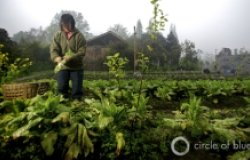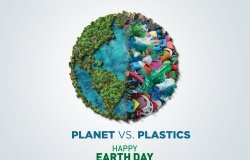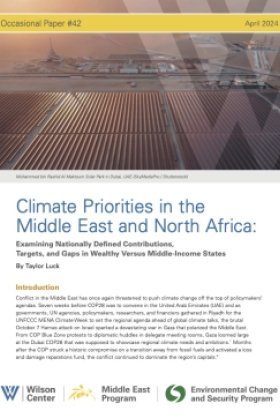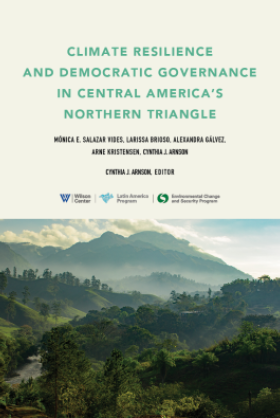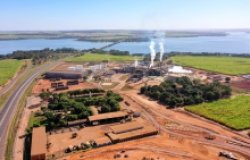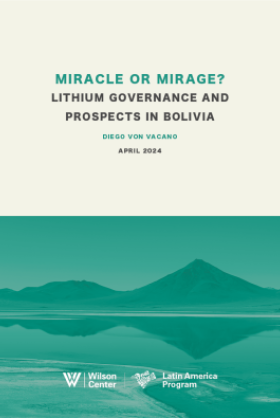Preview: Choke Point: China Part II
The Woodrow Wilson Center's China Environment Forum and Circle of Blue have been working on the next part of the Choke Point: China series with support from Skoll Global Threats Fund. Circle of Blue’s director and senior editor just returned from the second fieldwork trip to China to examine the water-energy challenges facing second-tier cities, shale gas development, water pollution, and the expansion of agriculture in the northeast. The upcoming Choke Point: China part II reports will begin being posted later this month, but we already have some short blog posts as a preview. The first focuses on aquaculture in China.
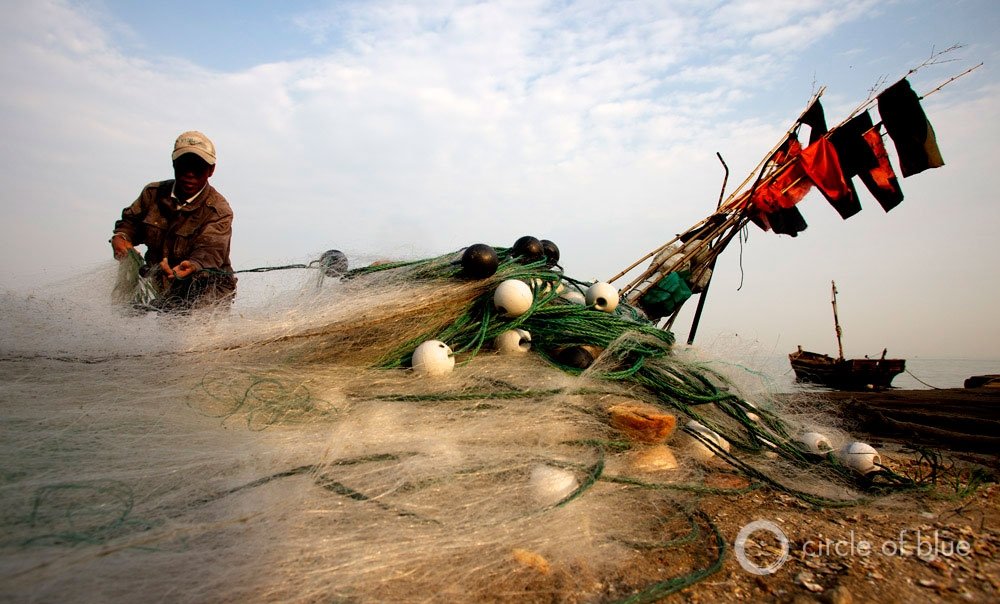
The China Environment Forum’s work on the water-energy confrontation began in 2010 when we invited the Circle of Blue team to present the findings from Choke Point: U.S., the first comprehensive assessment of the clash between energy production and water supply by an American science, news, and communications organization. The Wilson Center’s China Environment Forum and Circle of Blue subsequently received a grant from the Energy Foundation to produce a counterpart study to Choke Point: US in China. The goal of Choke Point: China was to define the most significant confrontations between energy, water, and food in the world’s second largest economy.Click here to see an overview of Choke Point: China part I.
The Woodrow Wilson Center's China Environment Forum and Circle of Blue have been working on the next part of the Choke Point: China series with support from Skoll Global Threats Fund. Circle of Blue’s director and senior editor just returned from the second fieldwork trip to China to examine the water-energy challenges facing second-tier cities, shale gas development, water pollution, and the expansion of agriculture in the northeast. The upcoming Choke Point: China part II reports will begin being posted later this month, but we already have some short blog posts as a preview. The first focuses on aquaculture in China.
QINGDAO, China — At dawn the surface of Aoshawei Bay is a grid of black spots, line after line, straight as the rays of the rising sun, from one shoreline to the other. The spots are buoys that support the submerged platforms and thick netting that grow scallops, clams, oysters, and mussels and enclose immense mats of edible kelp.
The buoys, tended by fishermen in wooden boats that have become gray and weathered by decades of use, are the most visible features of an aquatic food factory that employs thousands and feeds millions in Shandong, a province of 96 million people.
And as my colleague J. Carl Ganter and I learned during an eye-opening interview with Yi Zhou, one of China’s top marine ecologists, Aoshawei Bay is an especially productive pearl in a string of clean Pacific coast bays that form the tidal infrastructure for Shandong Province’s marine aquaculture industry, the largest producer of farmed shellfish on Earth.
“Thirteen million tons a year,” exclaimed Yi Zhou, a professor of marine aquaculture and ecology at the Institute of Oceanology, a research unit of the Chinese Academy of Sciences located on a shoreline campus here. “Chinese marine aquaculture produces 13 million tons of shellfish a year, more than any other country. Seventy percent is produced in Shandong.”
Yi explained this to us in a second-floor conference room overlooking one of Qingdao’s broad sand beaches in the lovely late afternoon light. Carl, a photographer and co-founder of Circle of Blue, has been to China 10 times. This is my sixth trip in less than two years. Both of us are accustomed to China’s off-the-chart scale and dimension in almost everything.
So 10 million tons of shellfish produced in nearby coastal waters, including this city’s own Laoshan Bay, wasn’t surprising — what came next was.
“Is it safe to eat?” I asked.
Yi expected the question. “Yes,” he said. “Very safe.”
During the next 45 minutes, Yi calmly responded to a fusillade of questions and explained the gathered facts — largely confirmed by science journals and other Qingdao environmental professors — about production practices that have helped make Shandong’s marine aquaculture industry an apparent model of local food production that is ecologically sustainable and safe.
Accomplishing those feats is almost entirely the result of a neat convergence of resource, market, and policy trends that are distinctive to Shandong Province:
- The province is rich in tidal bays that fill with cold water, fortified with the sort of micro-nutrients favored by shellfish. The bays also empty, in effect transporting and distributing marine wastes that the resident shellfish filter as part of their natural feeding. Those wastes also provide nutrients to the enormous floating edible kelp beds that are raised alongside the shellfish — it’s like planting marigolds alongside cucumbers in an organic garden.
- China’s appetite for shellfish is growing, and so is the world’s. Shandong is now an important shellfish exporter, which keeps prices high and helps fishermen to earn good livings. Production has increased 3 percent a year since 2000, Yi said.
- Chinese marine production techniques emphasize intense aquaculture density, but Yi assured us that they do not challenge the ecological capacity of the coastal bays. The waters north of here in Sanggou Bay, for instance, are so packed with shellfish and kelp beds that, from the air, it looks like a patterned blanket has been thrown over every square kilometer of the surface. But oxygen levels are high and water quality is very good, Yi said.
- Untreated municipal sewage and industrial wastes are not being drained into coastal bays, in large part thanks to the big marine agriculture sectors in Shandong’s coastal cities. Qingdao, for instance, has made a big investment in sewage-treatment plants and has spent the last decade closing many of its old steel, metal-plating, and chemical factories, all among the worst industrial polluters.
Each one of these points, needless to say, conflicted with everything I thought that I knew about Chinese aquaculture. I’ve since learned more.
Last year, China produced 56.1 million metric tons of fin fish and shellfish — nearly 7 percent, or 3.9 million metric tons, of which were exported for $US 17.79 billion. The national aquaculture industry is close to evenly divided between Pacific coastal marine aquaculture (52 percent) and freshwater fish production (48 percent), mostly in inland ponds. (NOTE: The 56.1 million metric tons includes the 13 million tons of marine shellfish produced each year, referenced by Yi above.)
Related Programs

China Environment Forum
Since 1997, the China Environment Forum's mission has been to forge US-China cooperation on energy, environment, and sustainable development challenges. We play a unique nonpartisan role in creating multi-stakeholder dialogues around these issues. Read more

Global Risk and Resilience Program
The Global Risk and Resilience Program (GRRP) seeks to support the development of inclusive, resilient networks in local communities facing global change. By providing a platform for sharing lessons, mapping knowledge, and linking people and ideas, GRRP and its affiliated programs empower policymakers, practitioners, and community members to participate in the global dialogue on sustainability and resilience. Empowered communities are better able to develop flexible, diverse, and equitable networks of resilience that can improve their health, preserve their natural resources, and build peace between people in a changing world. Read more
